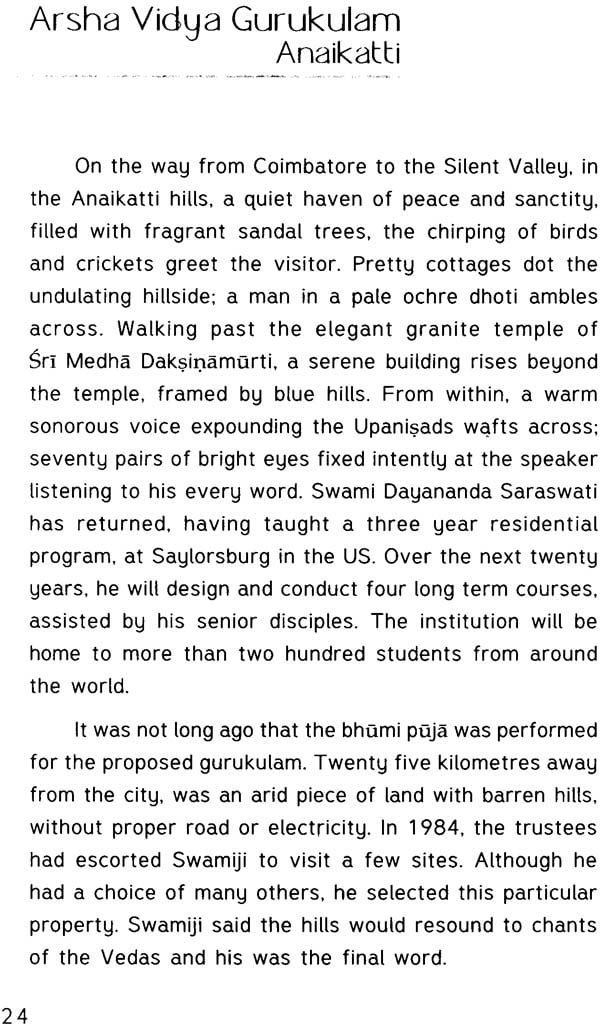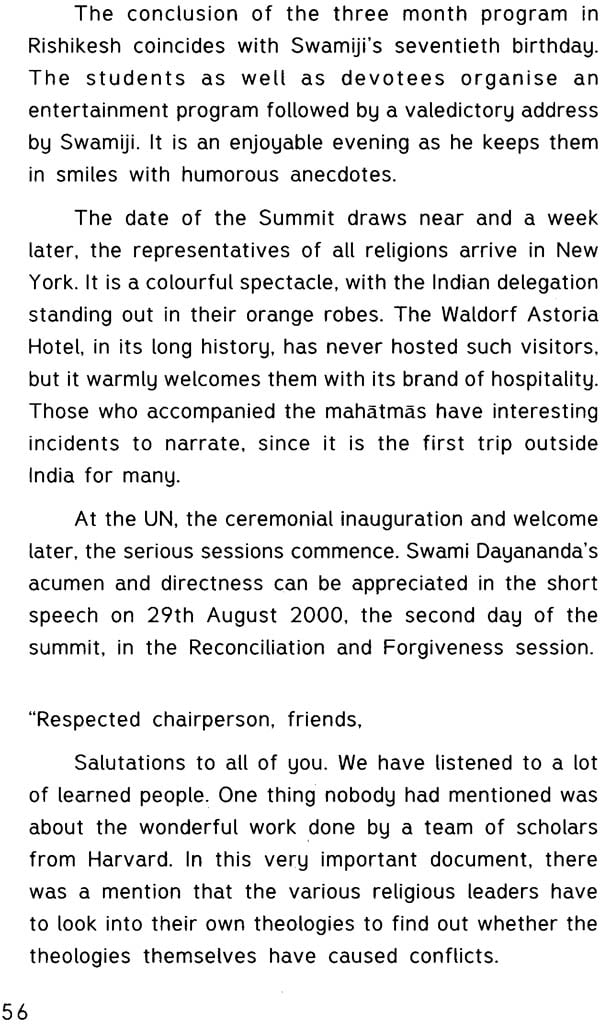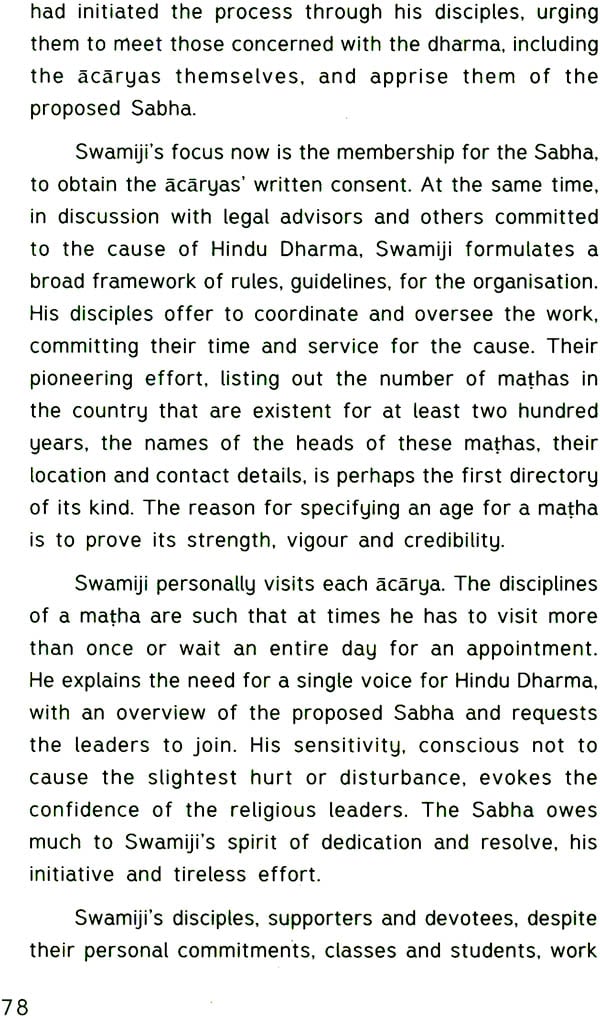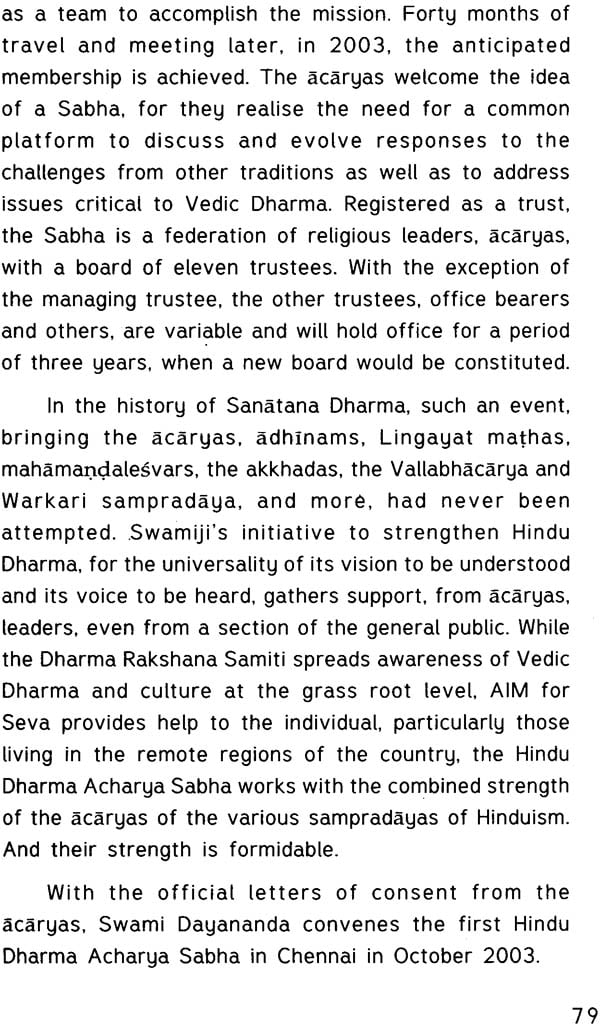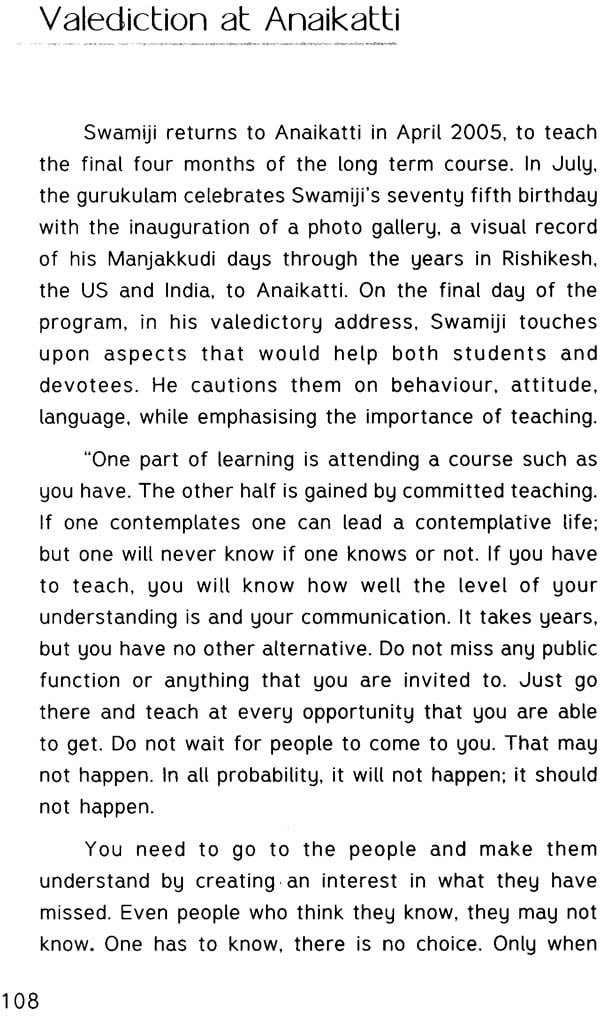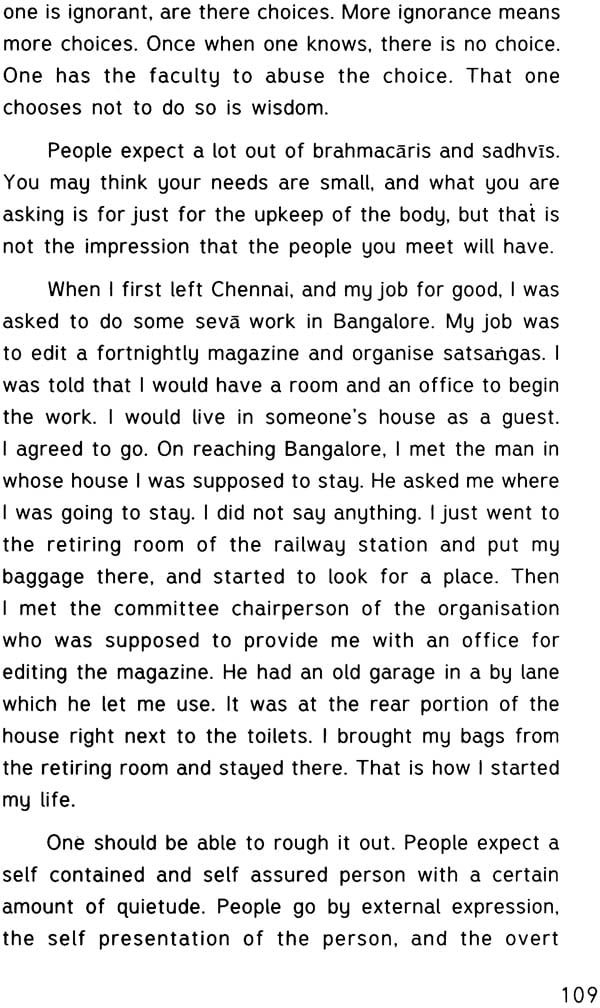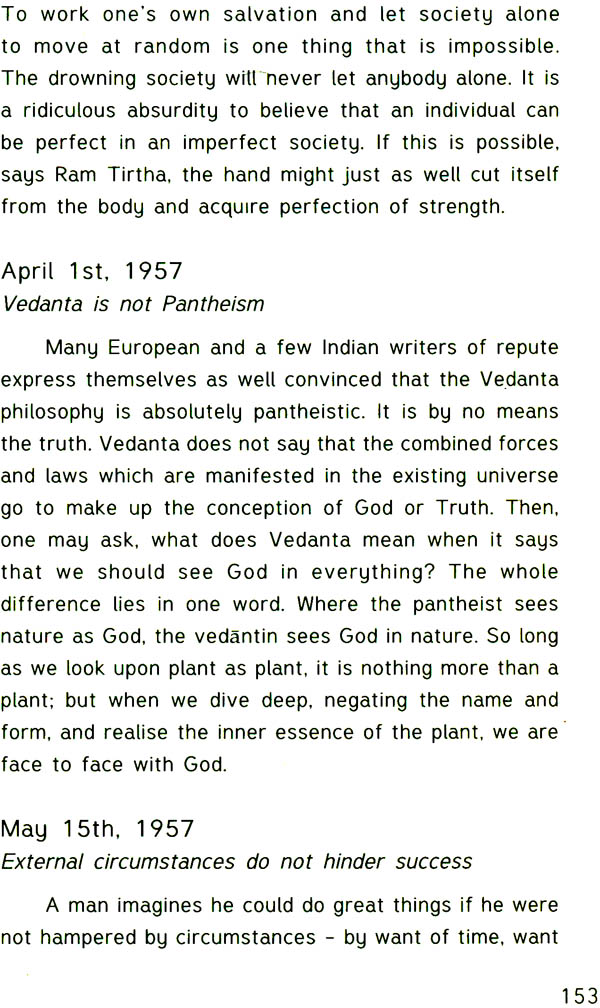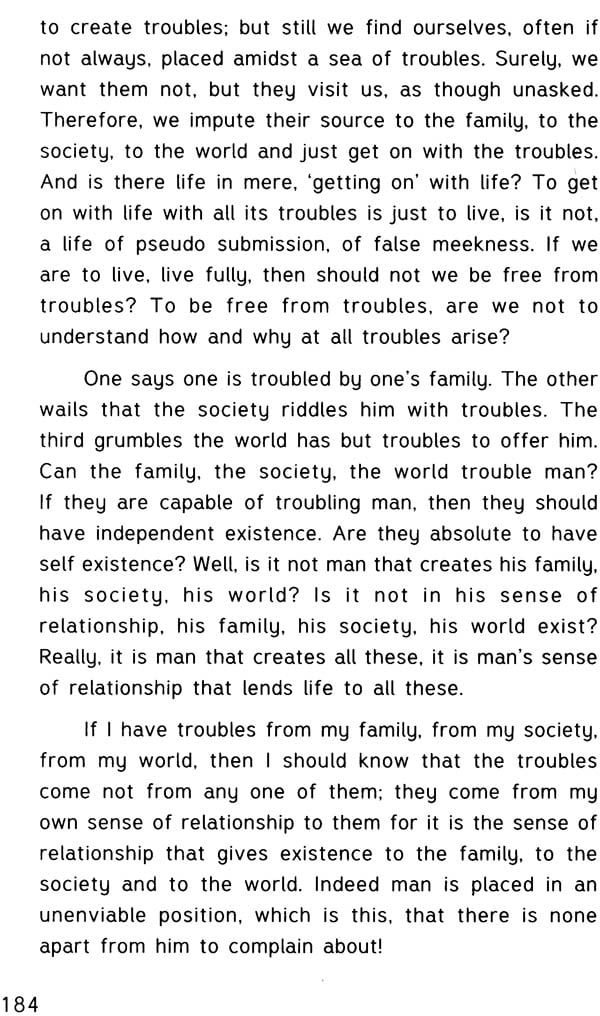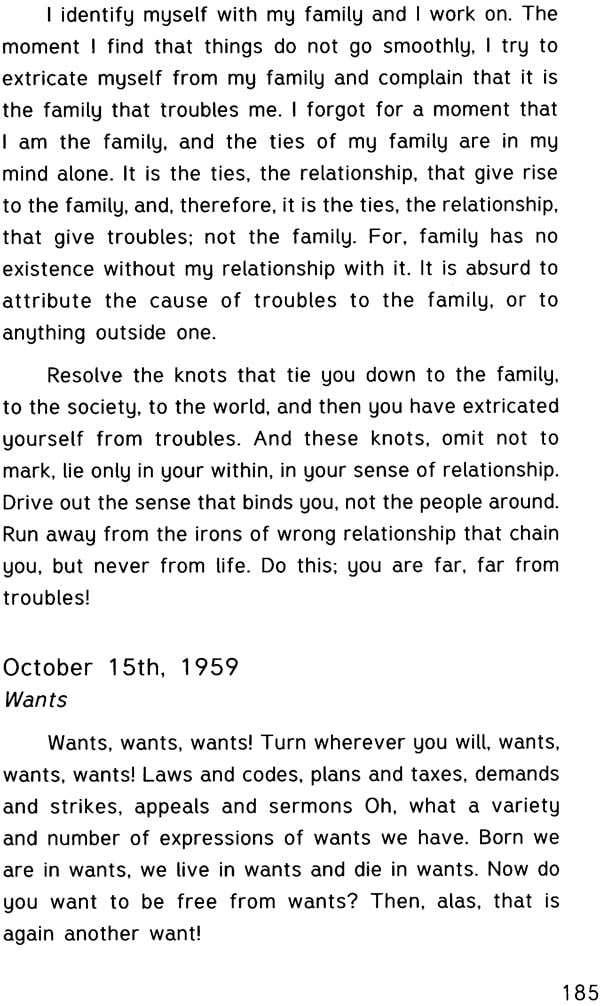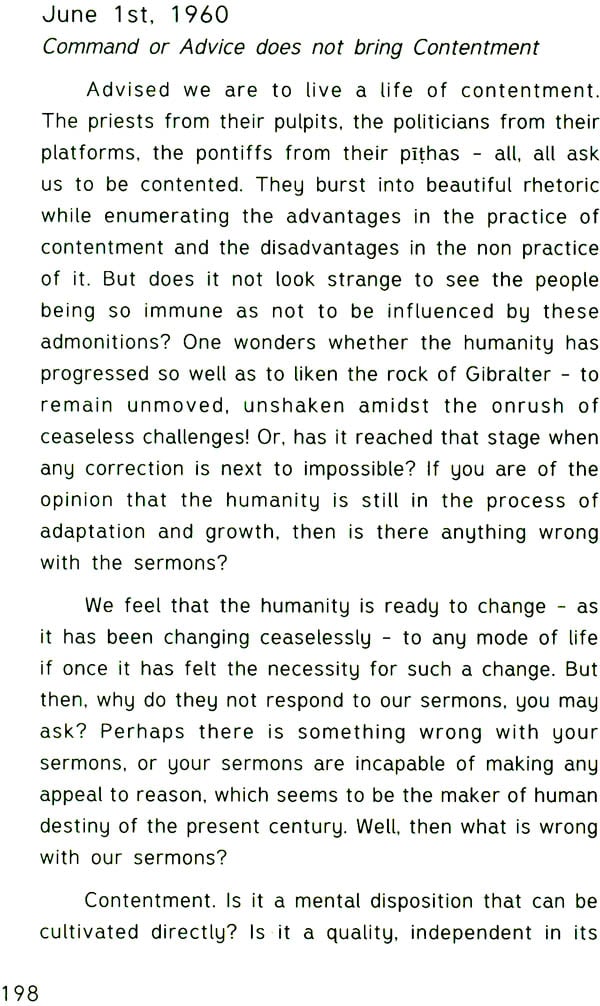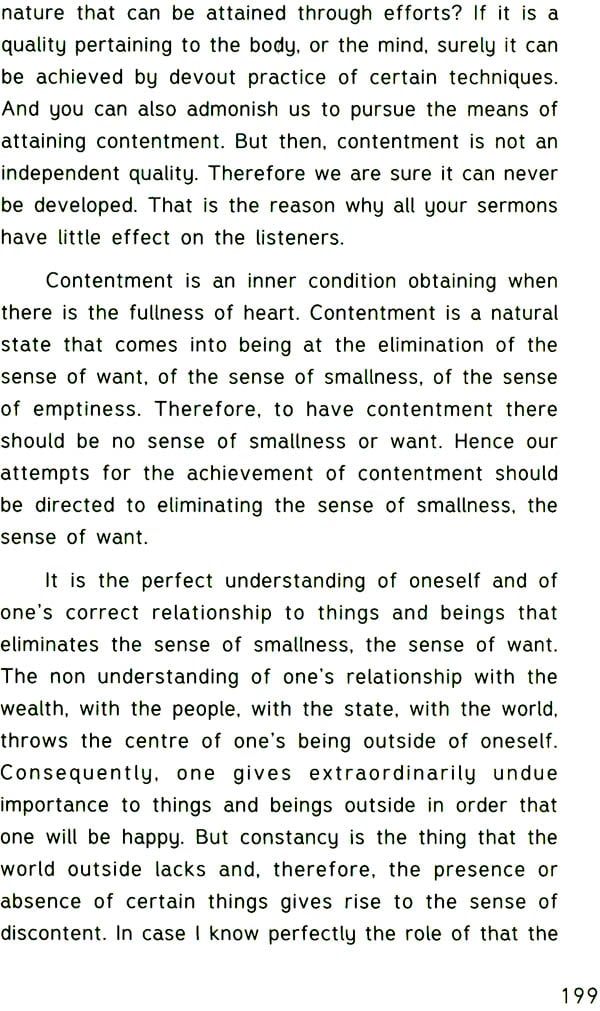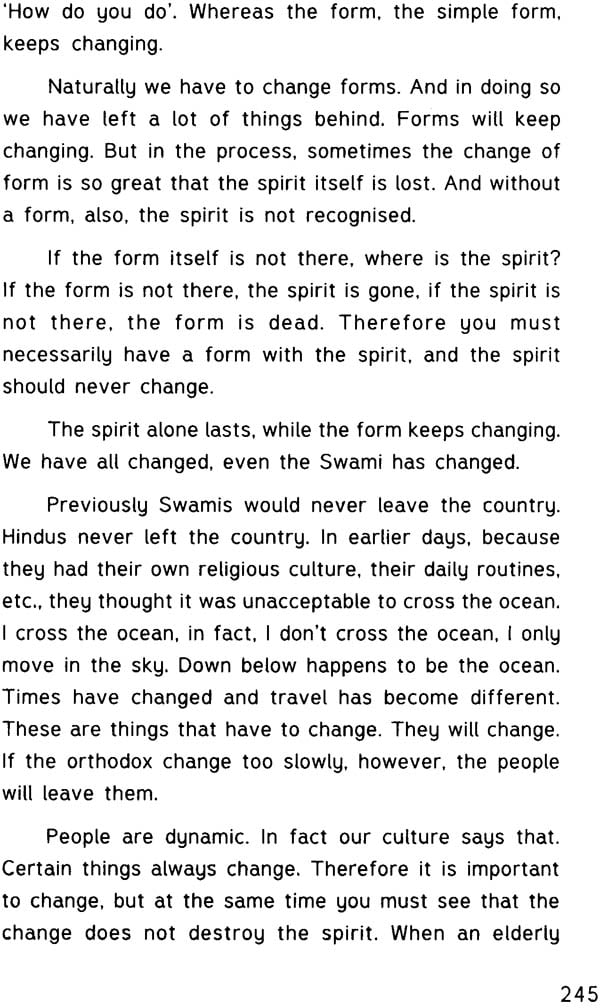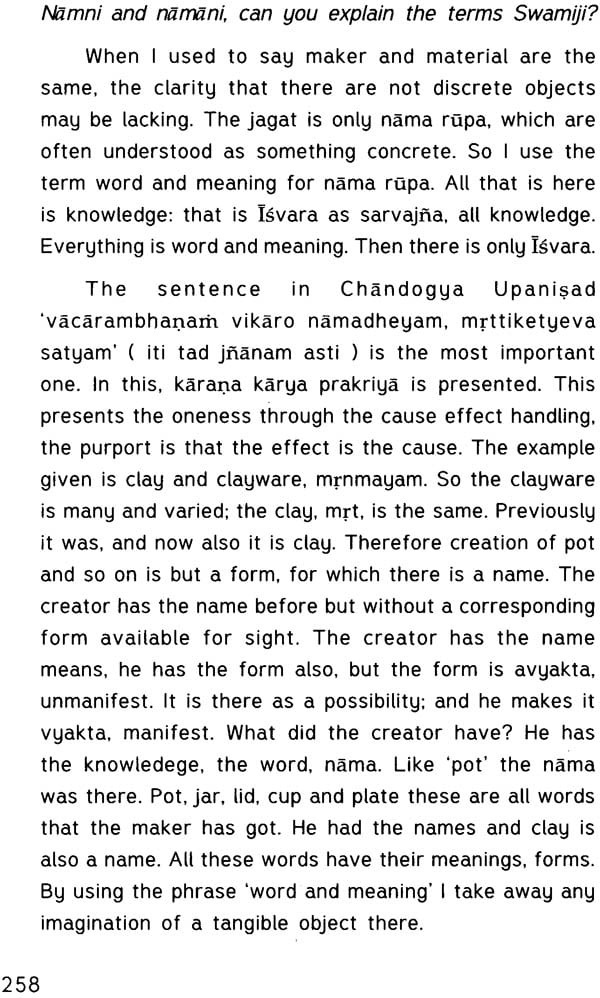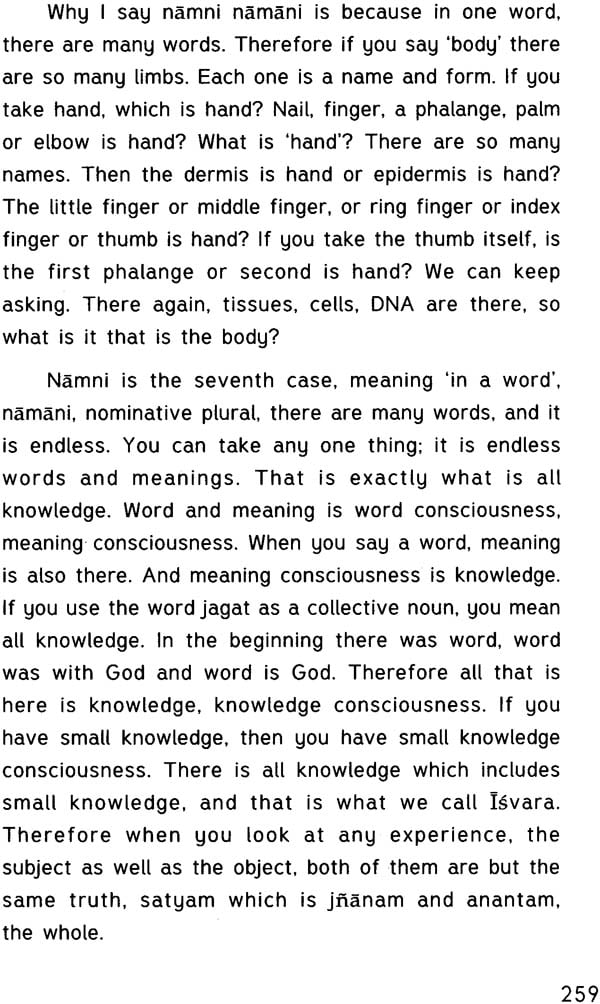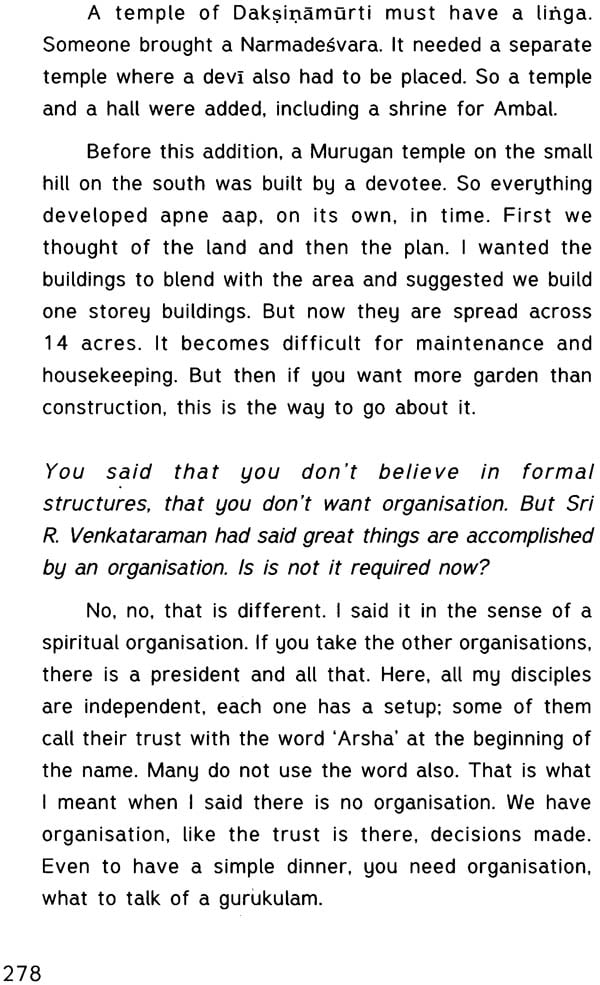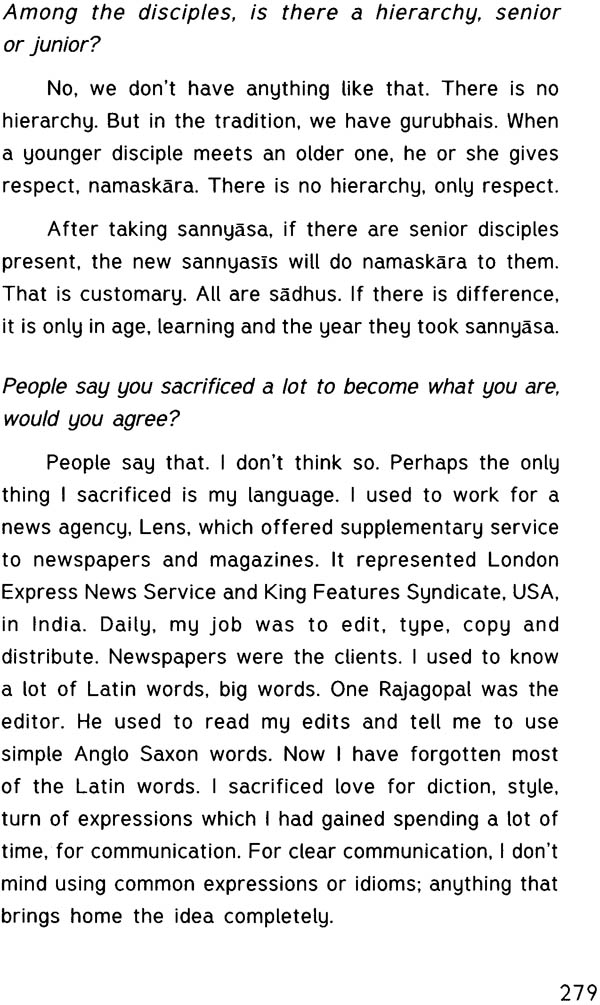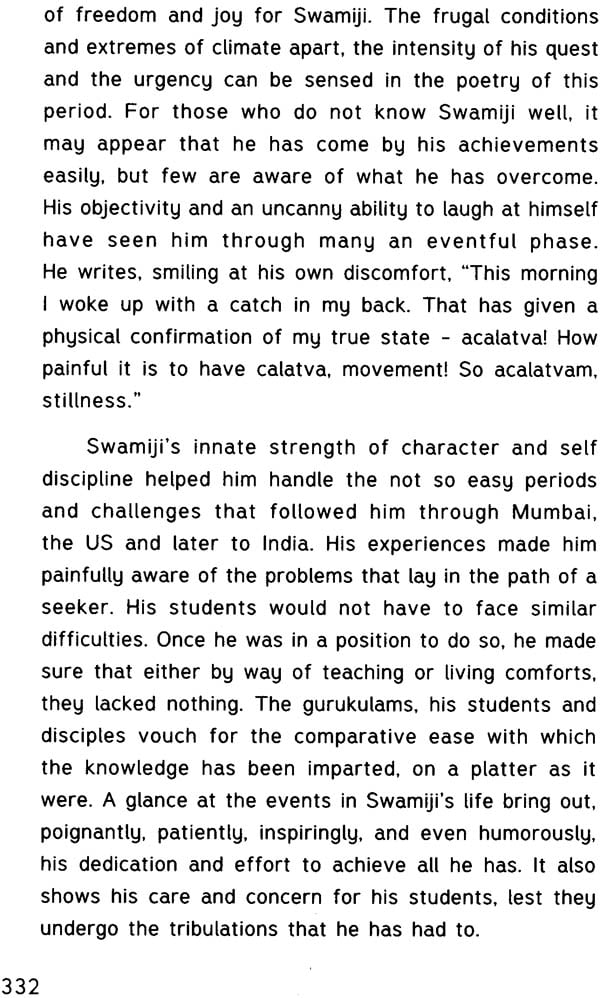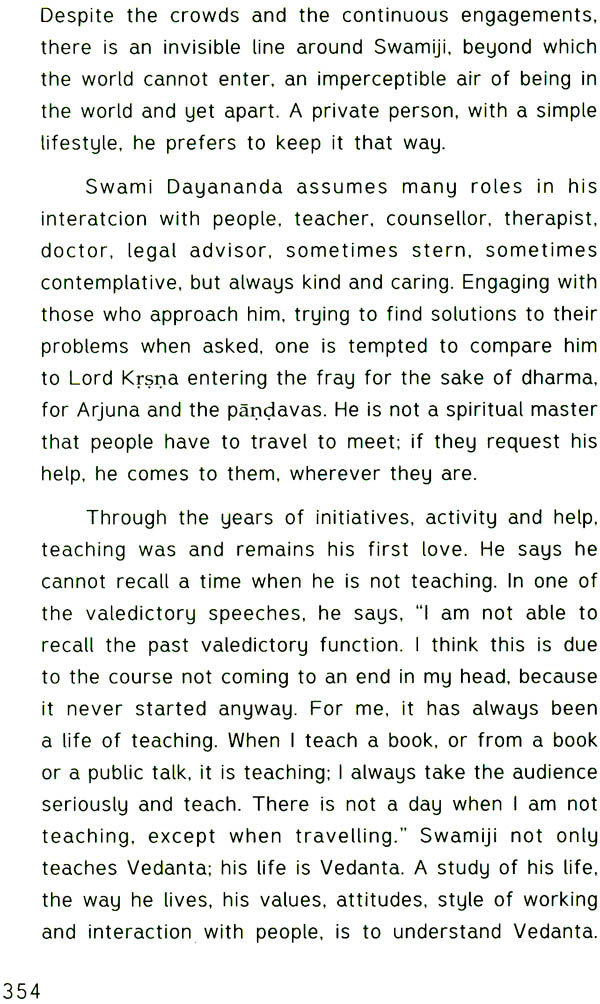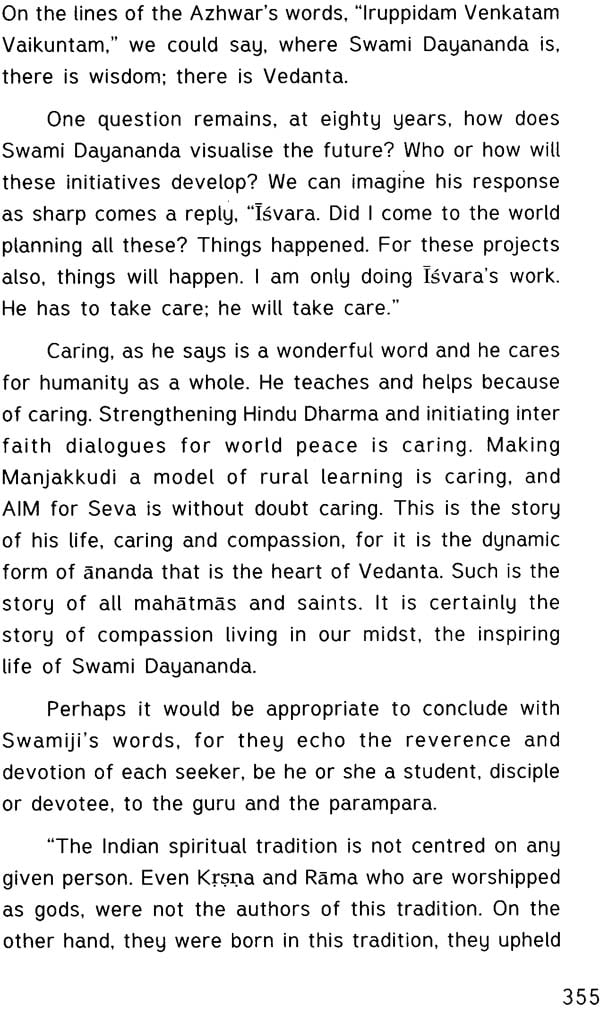
Swami Dayananda Saraswati (Contributions and Writings)
Book Specification
| Item Code: | NAK532 |
| Author: | Sheela Balaji |
| Publisher: | Arsh Vidya Research and Publication Trust |
| Language: | English |
| Edition: | 2012 |
| ISBN: | 9789380049724 |
| Pages: | 372 |
| Cover: | Hardcover |
| Other Details | 8.5 inch x 5.5 inch |
| Weight | 600 gm |
Book Description
Preface
Satabhisekam, the passage of one thousand full moons, is a significant milestone, in the journey of a person's life, according to Vedic culture. When it is of a most revered and respected person, the occasion demands an offering befitting the person's stature. Towering above in intellect and wisdom as Swami Dayananda Saraswati does, it is an onerous task and with hesitation one embarks on such an endeavour. His contributions to Vedanta and Vedic Dharma, significant as they are, need to be recorded and adequately presented. The satabhtsekarn of this extraordinary thinker and spiritual leader of our times affords an appropriate occasion to do so. It is sincerely hoped that the words and works may inspire those who are already on the path or debating to enter, encouraging adherents of dharma and seekers alike.
There has been no serious attempt to record Swamiji's contribution to the teaching tradition and Vedic Dharma after 1990. The earlier volume, published on the occasion of his sixtieth birthday, traced his life from the Manjakkudi days through the years in the Chinmaya Mission to the Arsha Vidya period, 1930 to 1990. It dwelt at length on Swami Dayananda as a teacher of Vedanta and his teaching methodology. In particular, the chapter on the Teaching Tradition of Advaita Vedanta brought out his pedagogic skills. The volume concluded with the performance of the bhumi puja for the gurukulam at Anaikatti.
The satabhisekam commemorative volume attempts to present the versatile 'person that Swami Dayananda is, through his contributions from 1990 to 2011, writings, conversation, and interactions. Opening with a description of the gurukulam at Anaikatti, we see through the students' eyes the life in an ashram and Swamiji's thoughtful concern for their welfare. The major initiatives, inter religious dialogues and seva programs follow in quick succession to conclude with the satabhisekam celebrations at Saylorsburg. They help to understand Swamiji's thought processes and how he accomplishes his objectives. The articles and editorials, 1957 to 2000, trace his journey through words. It provides another dimension of Swamiji's personality, the literary dimension. Through the conversations, Swamiji shares his views on sastra, astrology, dharma, psychology and the role of a teacher, a guru. In the concluding chapter, we see Swamiji through his interactions, assuming different roles, coming across as very human, very approachable.
The events, initiatives, achievements and writings, uniformly point in one direction, the inherent strength of the Vedic Dharma and its universal vision which is Vedanta. It has uniqueness of vision and culture that are integral to it, which need to be emphasised. Those who understand the profundity and all encompassing view of this dharma, realise that there is no other that can compare in its breadth of vision. Welcoming every aspect of creation, the Vedic tradition, which is also a religious culture, looks upon it as a manifestation of Isvara. There is nothing but Isvara. To use Swamiji's words, "Dharma is not a mandate of God. It is a manifestation of God. Dharma is Isvara. If it is properly interpreted, life becomes objective, yoga. One can be a beneficiary without destroying others." He concludes, "The more you conform to dharma, the more successful you are in life. It is not an advice; it is a way of life." Consequently, there is not the least need for religious conversion, for disturbance of any kind, for everything is Isvara. This is the critical relevance and strength of Vedic Dharma, an essential component for global peace and harmony. Over the years, the value and content have not been adequately appreciated, enveloped by miasma of misinterpreted concepts and less understood principles of the dharma. It is more due to lack of understanding, as education of the dharma and its vision has not received the attention it deserves.
A profound culture requires to be projected. It also needs propagation. Since this involves time and resources, the need of the moment is to protect it from aggressive religious traditions. It means religious conversion programs have to be firmly objected to and checked, because not only do they disturb, but they hurt people as well. Swamiji says that the core person is the religious person, and when that person is hurt, it becomes a source of tension and conflict. Committed to ahimsa he is pained by violence, irrespective of who the person is or what his or her calling. It is unacceptable in any form, by any person.
The Vedic culture is a treasure bequeathed to humanity that has survived centuries of depredation with difficulty. Swamiji calls it a battle scarred warrior of a civilisation. The mere fact that Vedic Dharma continues, despite the years of unfortunate experiences, testifies to its innate value and relevance. Swamiji's efforts therefore are towards creating awareness of its universal significance. He believes that such appreciation would develop self assurance in individuals, communities and in a nation. Swamiji's anthem for seva sings of the well being of Bharat, its prosperity, its glory; Bharat that is praised by great minds of sages like Bharata. His concern for the Vedic vision flows to its culture, to the individual who is the basic building block of a nation. He remarks, "We are into people making. We work with minds." From minds, we can extrapolate to individuals, to families and beyond.
Swamiji's focus and major activity until 1999, has been teaching Vedanta in classes at the gurukulams and public talks. That year, the floodgates open as it were and a spurt of activities inundates his life as a teacher. The location, purpose, people and topics vary, but the objective remains constant, strengthening Vedic Dharma, creating awareness of one's tradition, for each person to be who he or she is. Programs are developed to equip tradition to suit contemporary communication and practices. Swamiji supports and encourages the many aspects of life that constitute culture, such as music, dance and other art forms, crafts, temple architecture, and much more. With this view in mind, he has initiated dialogues, conferences and programs in India and other countries, such as the UN Millennium Peace Summit. His contribution of providing a unified voice for Hindu Dharma through the Acharya Sabha is a historic achievement. And the conception of a grass root level caring program, the All India Movement (AIM) for Seva, reaching to all people irrespective of their social and cultural background, is Swamiji's another unique accomplishment.
Significant though his efforts towards dharma and seva are, he prefers to call himself, simply, a teacher of Vedanta. In that, he is certainly the rarest of his kind, for his communication is precise and true to the nature of the self, the truth that he teaches. He does not resort to hyperbole nor does he mystify. His teaching is precise and direct, as he makes us understand that none but the self, Brahman, exists. The division of subject object melt. Only awareness remains. At times, when I hear him teach, I seem to hear, clearly, the message of the mystic school. On other occasions when he dwells on the nature and methodology of teaching, the use of negation, thoughts of another philosophic tradition run through. Above all, I hear the Vedantic vision, which he brings to life.
Introduction
Swami Dayananda Saraswati, G. Natarajan, was born in 1930 at Manjakkudi, a small village on the Kaveri delta, near Kumbakonam, Tamilnadu. After completing his basic education, he went to Chennai in search of employment. Thereafter, in 1953, a meeting with Swami Chinmayanandaji inspired him to take to a life of seva, study of Vedanta and Sanskrit. The following years were dedicated to understanding the content and vision of Vedanta, which brought out fundamental issues that required further guidance and learning. In 1961, with Swami Chinmayanandaji's permission, Brahmacari G. Natarajan went to study with Swami Pranavanandaji at Gudivada. Frequent visits to meet Swami Pranavanandaji, spending more than a month at a time with him at satsali gas, helped him understand that the Upanisads were pramana, means of knowledge to know the truth of the Self. This impelled him to study once more the sastre, with Sankera's commentaries, gaining in sights that transformed his thinking and outlook. It was a critical shift in vision, one that would have significant consequences. On Mahasivaratri day, 4th March 1962, he was ordained as Swami Dayananda Saraswati by Swami Chinmayanandaji in Chennai.
A short retreat later at the Tapovan Kutir in Madurai, Swami Dayananda went to Mumbai, to the newly inaugurated Sandeepany Sadhanalaya, where he was given the responsibility of editing the Mission's magazine Tapovan Prasad, while Sri Swamiji conducted the residential Vedanta course. Although Swami Dayananda was not involved in the course, he used to teach chanting of the Gita. Taittiriya Upanisad and other verses including the guru stotram, akhanda mandalakaram, verses selected from the Guru Gita. Later, in early November 1963. with his guru's blessings. Swamiji left for Rishikesh where he studied Brahmasutra bhasyam with Swami Taranandaji at the Kailash Ashram. Swami Pranavanandaji's inputs. studying the Brahmasutra with Swami Taranandaji and Swamiji's own efforts, together brought about a change in his understanding of Vedanta and helped him forge a different direction in his teaching methodology.
At Rishikesh. Swamiji stayed at the Andhra Ashram. exploring the Himalayan towns. He found a place on the banks of the Ganga which would later become his ashram. A simple grass hut built on this piece of land was to be Swamiji's home for the next few years. Living in this hut with spartan comforts the period 1964 to 1967. were years of study and teaching. Later, as he drew more students and devotees through his classes and travels. the grass hut gave way to a brick building. Then, gradually, became the large ash ram it is today. Enjoying the freedom of the mountains and a lifestyle eminently suited for contemplation and study. Swami Dayananda had no thought of moving out of at any time when he heard that his guru would be at Prayag Kumbhamela. He travelled to Prayag to meet Swami Chinmayanandaji to inform him that he had completed the studies of the Brahmasutra. A few years later, Sri Swamiji's ill health necessitated assistance in teaching as well as for the Mission work. Sri Gopalakrishna Reddy, secretary of the Chinmaya Mission at Chennai, suggested that Swami Dayananda could be persuaded to resume public talks and lectures. Responding to the invitation, between 1967 and 1970, Swami Dayananda began travelling to different towns and cities in India, spreading the message of the Gita and the Upanisads, but returned to Rishikesh between lectures.
With the completion of the first long-term study program in 1968, and given the state of Swami Chinmayanandaji's health, there was a lull in the teaching activities at, the Sandeepany Sadhanalaya. The board of trustees of the Tara Cultural Trust. Chinmaya Mission, Mumbai, considered handing over the property to the Bharatiya Vidya Bhavan. In 1971, a few trustees suggested Swami Dayananda could conduct a long-term study program, while Sri Swamiji could continue his travel and public lectures. The board welcomed the suggestion, and Swami Dayananda was asked if he would accept ' the position as acarus. Swamiji was hesitant initially, but when pressed by the trustees, he agreed to take the responsibility. He formulated a curriculum that would gradually unfold the vision of Vedanta. His teaching methodology owes its origins to the tradition of the Kailash Ashram, Rishikesh, flowing from the revered master Sri Vishnudevanandaji, through Swami Taranandaji to Swamiji himself. It has since become the standard teaching program in Chinmaya Mission and later, with some additions like Panini, in all the Arsha Vidya centres across India and the world. Arsha vidya, the knowledge that has come from the rsis, is not a mystic tradition. It is not a set of beliefs sustained by an organisation. The knowledge has survived without organisation and without a hierarchical structure, through an unbroken line of teacher to student.
The years 1972 to 197~, Swami Dayananda conducted two three year residential teaching programs in Mumbai. Meanwhile, students in the US wanted a residential program in America, and in 1979 Swami Dayananda was requested to establish and develop a centre for Vedanta and Sanskrit there. With little infrastructure in place, Swamiji set about organising the program at Sandeepany West. Piercy, California. The purchase of a suitable property, refurbishing and providing facilities exacted both finances and effort on the part of Swamiji and others involved. Every student worked hard to make the facility self sufficient in terms of funds and infrastructure. After the completion of the study program at Piercy in 1982, Swamiji returned to India, preferring to remain unattached to any organisation, but committed to spreading the message of the Upenisads through public talks and lectures. In 1985 at the behest of students, devotees and disciples, the Arsha Vidya Gurukulam at Saylorsburg, Pennsylvania, was established. Construction of cottages and other buildings, raising funds, maintenance, kitchen work and administration, every department was manned by the students and devotees. Finally, in 1987 the program was inaugurated and Swamiji conducted the first three-year residential program under the banner of Arsha Vidya.
Even while the course was going on at Saylorsburg. planning and construction for a teaching facility in India were initiated. Three years later. in 1990 the facilities at Anaikatti near Coimbatore were ready to enrol students. From 1990 until 2004 besides the first ashram at Rishikesh. Swamiji established two major centres for learning Vedanta and Sanskrit at Anaikatti in Tamilnadu and Nagpur Maharashtra. The gurukulams offer simple but comfortable facilities for stay and food. They are self contained facilities with a temple. lecture hall bookstore dining areas and more. Administration and general upkeep of these gurukulams are taken care of by volunteers as well as paid staff members. The curriculum includes the Upanisads, Bhagavad Gita and Brahmasutra along with the detailed commentaries of Sankare. Sanskrit grammar with Panini as well as other Vedanta texts. It is important to note that the texts are taught and explained in English. When the students complete the long term program they not only have an excellent understanding of Vedanta but can communicate in English as well. Such skills are very relevant for this knowledge to reach more people in India and other countries.
The three year programs preceded by three or six month introductory courses are conducted without cost to the student, with financial assistance and sponsorships from Swamiji's devotees and other philanthropic individuals. By the end of the program the student is exposed to over 3000 hours of teaching with a daily schedule that starts at 5.00 am and continues until 10.00 pm. After completing the studies the student chooses a location from where he or she can spread the teaching. Thus in forty years. Swamiji has contributed richly to the Vedanta teaching tradition creating a large body of ordained disciples and lay teachers. Today almost every major city and town in India offers Vedanta and Sanskrit classes. following Swamiji's methodology and style of exposition. Besides India the message has spread to other countries through his non Indian students.
With the completion of the second long term program at Anaikatti circumstances brought Swamiji to the national and then on to the world stage to strengthen and propagate the richness of Vedic Dharma. In order to accomplish this end he initiated dialogues and conferences to firmly establish this tradition globally. providing it a strong voice that would be heard and listened. Further each of his efforts was to make the people of this land aware of their great heritage. His early writings of the 1950s spoke of his anguish at the lack of understanding and appreciation of their culture by the Hindus themselves. He exhorted those who were supposed to lead to come out and educate the people of their religion of their cultural wealth.
| Preface | |
| Introduction | 15 |
| Arsha Vidya Gurukulam. Anaikatti | 24 |
| The Initial Step | 39 |
| Millennium Peace Summit | 52 |
| All India Movement for Seva | 60 |
| World Congress for the Preservation of Religious Diversity | 70 |
| Hindu Dharma Acharya Sabha | 77 |
| Manjakkudi : A Model for Rural Education | 88 |
| World Council of Religious Leaders | 93 |
| Peace Summit of Women Religious Leaders | 97 |
| The Eventful Years 2003 - 2005 | 99 |
| Valediction at Anaikatti | 108 |
| Tirupati Declaration | 112 |
| Ram Setu | 114 |
| Tehri Dam | 118 |
| Tirumurai Oduvar Tradition | 119 |
| Reviving Temple Traditions and Vedic Culture | 121 |
| Dharma beyond India | 126 |
| Hindu Temples are Halls of Learning | 128 |
| Hindu Jewish Dialogue | 132 |
| International Inter religious Conference Faith in Human Rights | 135 |
| Hindu Buddhist Conference | 140 |
| The Satabhisekarn Year | 144 |
| Writings of Swami Dayananda | 147 |
| Conversations with Swamiji | 252 |
| An Overview | 301 |
| Swami Dayananda, the Person | 327 |
| Chronology | 360 |
| Organisations | 363 |
| Websites | 369 |
